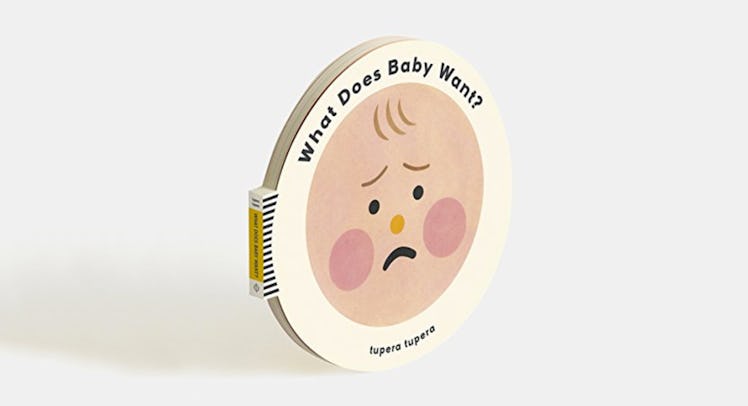This Controversial New Baby Book About Boobs Is Fantastic
Babies are concerned with three things: eating, pooping, and sleeping. Yet boobs are curiously absent from the oeuvre of children's literature. Until now.

Babies are concerned with three things: eating, pooping,and sleeping. Yet boobs, milk buffets anchored to the person they love the most, are curiously absent from the oeuvre of children’s literature. Absent, that is, until a new book called What Does Baby Want? published earlier this summer by Phaidon. (Disclosure: Phaidon is also the publisher of my children’s books.)
What Does Baby Want? is a board book with simple language and a basic message. The illustrations are pleasantly minimalist and the form, a circle, fetching. Like many board books, it’s straight-forward. What does baby want? Is it a teddy bear? Nope. Is it a bouncy ball? Hell no. Is it a tambourine? Get the fuck outta here. It’s boobs, of course. The kid is hungry.
As you might surmise from the circular shape, the climax of the narrative is a pair of beautifully shaped boobs, nipples and all. The English language rights to the book were acquired by Phaidon in 2016 from a Japanese publisher called Bronze Publishing. The authors, Tupera Tupera, are a Japanese husband-and-wife team, Tatsuya Kameyama and Atsuko Nakagawa.
That a book whose centerfold are gazoombas is something of a coup in children’s book publishing, a notoriously prudish genre. Who can forget the uproar the sight of Mickey’s tiny penis caused in Sendak’s In the Night Kitchen or how Alsatian author Tomi Ungerer’s career was ruined after he told a room full of librarians, “‘If people didn’t fuck, you wouldn’t have any children, and without children you would be out of work.”
But boobs, boobs are what babies biologically and universally want. Yet, according to Cecily Kaiser, Phaidon’s publishing director for children’s books, they’re PNG’d in most literature. “We’ve found only four books that feature a child nursing,” she said. “There are by far more bottles than breasts.” Part of this, she says, is the genre’s conservatism. “People shy away from nudity, even when the nudity has to do with an essential biological function like breastfeeding. Bottles are much more common.”
The absence, however, forms a powerful social bias towards bottle-feeding (not that there’s anything wrong with bottle feeding.) But why not represent a reality which, according to the CDC, over 81 percent of mothers (and fathers) experience? Why not encourage a practice the American Pediatric Association hails as proven healthy yet frequently tails off well before the recommended expiry date of 24 months? Surely, our discomfort with the human body shouldn’t preclude an accurate representation of the world.
The point of children’s literature, like all literature, is to reflect something true. Even if the worlds depicted are fantastical, as they so often are, the ozone is made of truth. What Does Baby Want? isn’t essential because it has boobs in it. It’s essential because it reflects a reality to our children, and to ourselves, which is under-represented but no less real for being so. It’s essential because it asks us to get over our own weird hangups about how we, as boob-loving men and women, look at boobs and forces us to consider them as our children do, as the source comfort, sustenance, and succor.
This article was originally published on